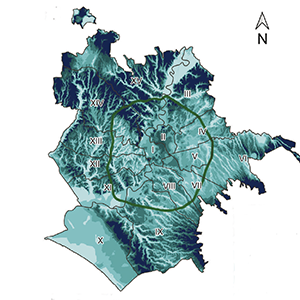Preliminary identification of areas suitable for Sustainable Drainage Systems and Managed Aquifer Recharge to mitigate stormwater flooding phenomena in Rome (Italy)

All claims expressed in this article are solely those of the authors and do not necessarily represent those of their affiliated organizations, or those of the publisher, the editors and the reviewers. Any product that may be evaluated in this article or claim that may be made by its manufacturer is not guaranteed or endorsed by the publisher.
Authors
This paper proposes a preliminary and large-scale survey methodology to identify areas suitable for indepth analysis for the application of Sustainable Drainage Systems and Managed Aquifer Recharge. These techniques are frequently applied to increase the natural infiltration capacity of water into the ground and their effectiveness depends on the local hydrogeological and morphological characteristics. The study area is the city of Rome where the aim is to mitigate the problems related to rainwater which, in case of extreme events, struggles to infiltrate into the ground, overloads the undersized drainage systems, and floods the urban space.The proposed method involves GIS geospatial analysis of the permeability of outcropping lithologies, the digital elevation model, and the piezometric levels of the aquifers. To identify the suitable zones, areas characterised by high permeability and a piezometric level that would confer a volumetric capacity to possibly store even large quantities of water, without triggering possible problems of water table rise, were identified. Data were divided into classes and indexed to compare and overlap them. Furthermore, the final result was compared with the urban flooding phenomena and the soil permeability map of Rome. The results of the performed analysis show that the preliminary suitable conditions to apply SuDS and MAR in Rome are widespread. The geological setting of the city is characterised by permeable lithologies in many places with an effective infiltration potential that would allow rainwater to infiltrate the subsoil and reach the first available aquifer.
How to Cite

This work is licensed under a Creative Commons Attribution-NonCommercial 4.0 International License.
PAGEPress has chosen to apply the Creative Commons Attribution NonCommercial 4.0 International License (CC BY-NC 4.0) to all manuscripts to be published.














